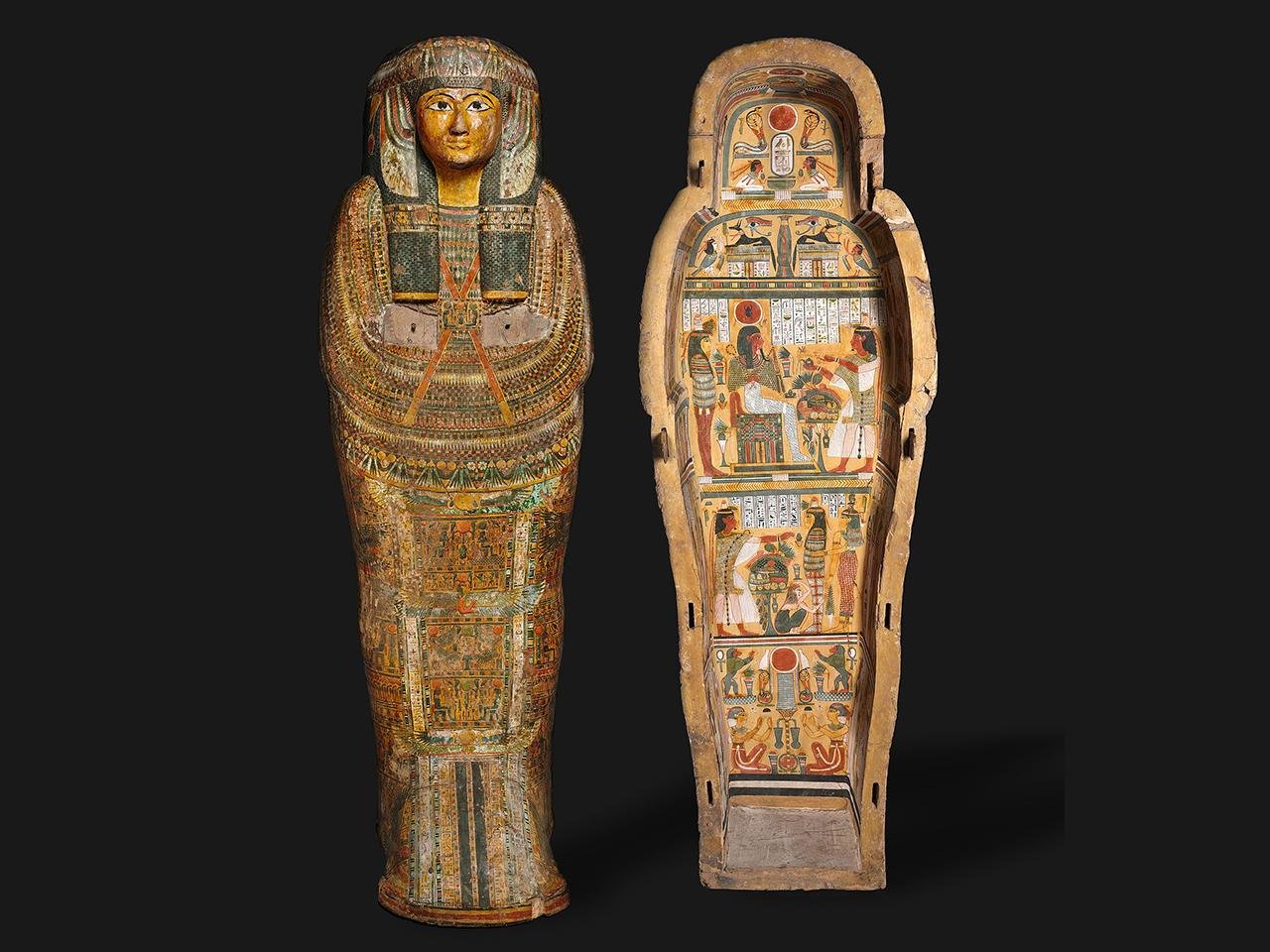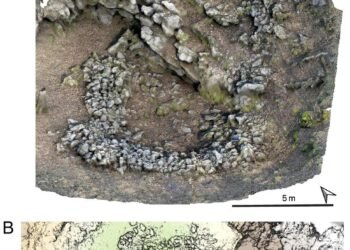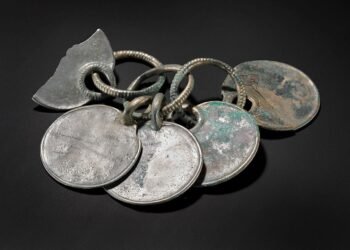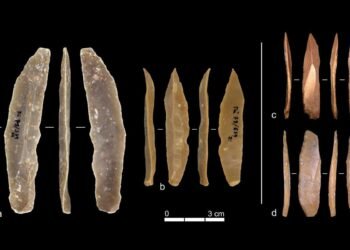In a recent archaeological discovery, an ancient cemetery in Egypt dating back 3,500 years, located in the central region of Tuna el-Gebel, has yielded a wealth of priceless artifacts. This cemetery, which falls within the era of the New Kingdom (circa 16th-11th centuries BCE), was the final resting place for esteemed individuals, including senior officials and priests.

The Egyptian Ministry of Tourism and Antiquities unveiled the treasure trove found within this necropolis. It included hundreds of significant archaeological finds like amulets, ornaments, stone and wooden coffins containing well-preserved mummies. Notably, one of these mummies was identified as “Jahuti Miss,” who held the position of “supervisor of the bulls of the Temple of Amun,” while another mummy was revealed to be that of a temple musician named “Mrs. Nani.”
Perhaps the most striking revelation was a remarkably long papyrus scroll, estimated to be 43 to 49 feet (13 to 15 meters) in length, with references to the famous “Book of the Dead.” This ancient papyrus is considered to be in good condition, although specifics about its contents remain undisclosed.
The “Book of the Dead,” an integral component of ancient Egyptian beliefs, was a collection of spells intended to guide the souls of the deceased in their journey through the afterlife. These spells could be adapted and placed beside the deceased to help them navigate the perils of the underworld and reach the god Osiris for their final judgment.
As per the archaeological team, this scroll is a unique discovery, as it is exceptionally rare to find a copy of the “Book of the Dead” within the original burial site.
Experts suggest that a detailed study of this text and its context could offer profound insights into ancient Egyptian beliefs about death, the soul’s passage to the afterlife, and the elaborate preparations made to ensure a successful transition.
The scroll is the first complete papyrus found in the Al-Ghuraifa area, said Mustafa Waziri, secretary general of the Egyptian Supreme Council of Antiquities.
In addition to the “Book of the Dead” papyrus, the excavation at Tuna el-Gebel led to the recovery of various other artifacts, such as mummies, stone and wooden coffins, more than 25,000 ushabti statues, canopic jars, and a variety of amulets.
While this discovery has excited scholars and researchers, many questions remain regarding the specific content of the papyrus, and the individuals it was buried with. The absence of photographs or detailed descriptions necessitates further official publication to make definitive assessments.























